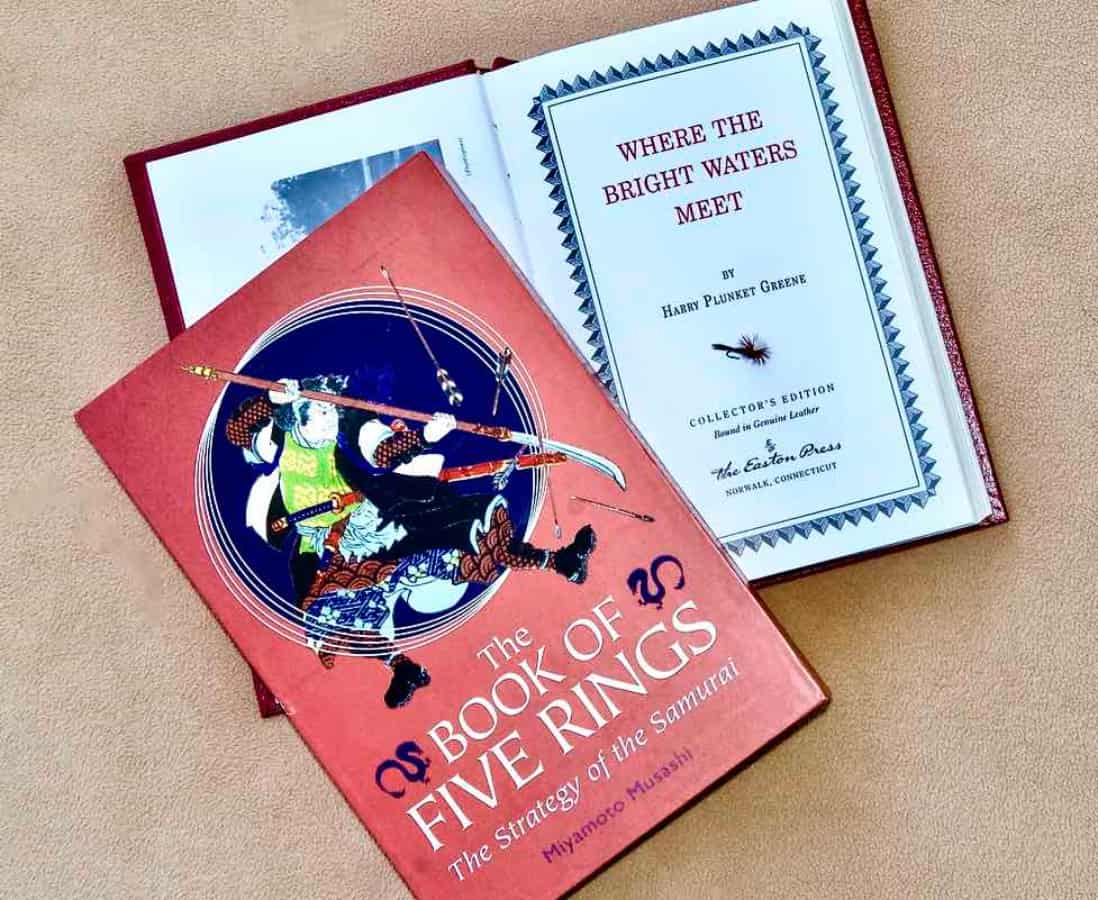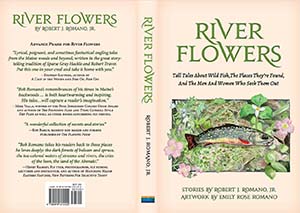The Way of the Fly

One of the pleasures of fishing with a fly is the knowledge that those of us who spend our time wading through streams and rivers are part of a rich sporting tradition. It’s a heritage handed down through the centuries by our fellow brothers and sisters of the Angle.
Interestingly, in an endeavor dominated by males, one of the first books written about fly fishing is purported to have been authored by a woman, Dame Julianna Berners, prioress of a twelfth-century nunnery. No surprise to those of us who fish in Maine, where Cornelia “Flyrod” Crosby was the Pine Tree State’s first licensed guide and Carrie Stevens became famous for her method of tying streamers we continue to cast today.
If Dame Julianna can be called the mother of our sport, then surely, Isaac Walton must be its father. In The Compleat Angler, Father Walton shared his joy of fishing. In a later edition, he enlisted the help of his young friend, Charles Cotton, to provide advice on how best to fish for trout and grayling with a fly.
At about the time Isaac Walton was writing The Compleat Angler, seventeenth-century Japan was emerging from decades of civil war. It was a time when ronins wandered the countryside, each declaring his style of swordsmanship to be the one and only method to defeat an opponent. In the centuries that followed Walton, his disciples would espouse their beliefs as to how to cast a fly. Like the ronins of Japan, each declared his method to be superior to the others.
In the fifth edition of The Compleat Angler, Brother Cotton taught us to “fish far and fine.” By the late 1800s, Frederic Halford had declared the dry fly to be our salvation, until Skues argued for the nymph. W.C. Stewart was the first to teach that fishing upstream was the best way to cast to trout rather than down, as had been the style since the time of Walton. Breaking with tradition, he described casting a short line when fishing upstream as being preferable to Cotton’s advice. Meanwhile, Alfred Ronalds codified what flies to use, matching them to the insects he found on the streams of England.
One of my favorite books of all time is a cautionary tale written by Harry Plunket Greene. In Where The Bright Waters Meet, Greene describes the joy of fishing his home water–The River Bourne, only to lament how overfishing, industrial development, and subsequent stocking of fish spelled the destruction of this once idyllic stream. Written in an easy-going style any angler will appreciate, this book is must reading for anyone concerned about the well-being of his or her local waters.

Bob Romano’s newest book River Flowers is available now. Visit forgottentrout.com for ordering information.
Another of my favorites is Golden Days, written by the watercolorist, Romilly Fedden, who describes fishing the streams of Britanny with his French guide, Jean Pierre, just prior to the First World War. The bond between sport and guide is nowhere better told than in this enchanting account of fishing through the French countryside as the clouds of war loom on the horizon.
On our side of the Atlantic, Frank Forester wrote for the common man as did Thaddeus Norris. It fell to Theodore Gordon to advance the works of the English writers. In so doing, he enriched American anglers in the way Cotton, Halford, and later, Skues had done for their British brethren. For many years thereafter, the Catskill style of sparsely tied flies replaced the “fancy” flies that preceded Gordon’s thoughtful contribution to our sport.
George LaBranche found that rather than trying to exactly match the way an insect looked, he could catch more fish by imitating how a bug acted on the water. He believed what was critical was how we presented the fly rather than what fly we used. More importantly, up until then, the English rules for fly fishing required an angler to cast to a specific fish. Not so, accordingly to LaBranche, who argued fishing the water was more effective, especially on America’s rough-and-tumble streams.
All of this found in books published by 1920!
By 1935, Preston Jennings did for American anglers what Ronalds had done for the British. Today’s hatch guides follow much the same format as that first created by Ronalds and Jennings. As the twentieth century progressed, America’s fly-fishing samurai continued the tradition of dueling theories, although without the deadly consequences of those fought by ronins. Men like Ray Bergman, Art Flick and Ernest Schwiebert used their pens rather than swords to prove what they experienced on the water. They were followed by Marinaro, Charlie Fox, James Leisenring, Vernon “Pete” Hidy, Sylvester Nemes, Swisher and Richards, Caucci and Nastasi, Gary LaFontaine and others up until the present time.
All of this and more is available for anyone interested in how we came to fish with a fly. Although the tradition continues with today’s angling writers contributing their thoughtful analysis of new techniques, you’d be amazed at how the more things change the more they remain the same.
Now that you’ve put aside your fly rod for another season, why not check out one or more of these authors—thoughtful anglers who’ve laid the foundation for the way we fish with a fly? Who knows, you might end up wandering the countryside carrying a pen with your fly rod rather than a sword.











